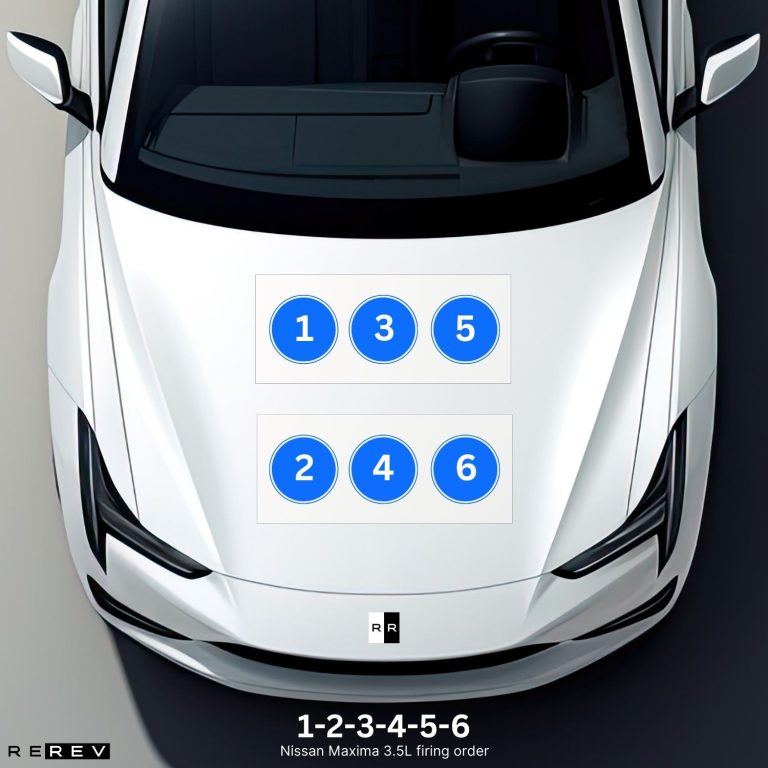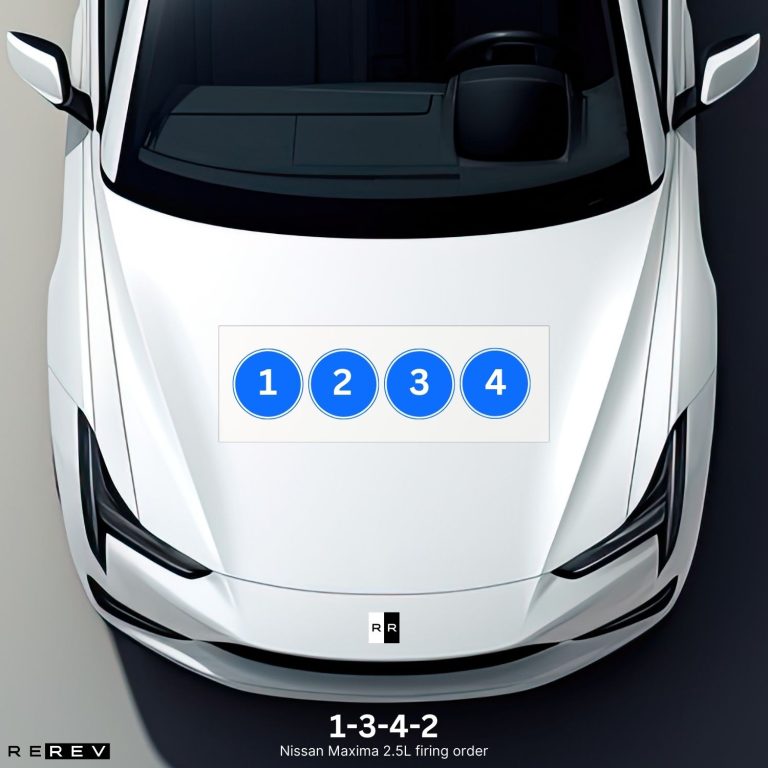Nissan Maxima (2000-2023) firing order — diagram & guide

Nissan Maxima is one of the longest-running Nissan models especially in the sedan vehicle category, and it’s all for a good reason. Ever since the 1980s, the car was equipped with reliable V6 engines and that practice continued into the 2000s.
The thing is – most drivers get confused when the time comes to maintain the engine by using the firing order. If that’s the case with you as well, don’t worry – our team has your back with our guide on the Nissan Maxima (2000-2023) firing order. We’ll go through each engine used from the 2000′ model year onward so you’ll have an easier time keeping your engine running smoothly.
| MAXIMA YEARS | ENGINE | FIRING ORDER |
|---|---|---|
| 5th Gen (2000-2003) | 3.0L V6 | 1-2-3-4-5-6 |
| 3.5L V6 | 1-2-3-4-5-6 | |
| 6th Gen (2004-2008) | 3.5L V6 | 1-2-3-4-5-6 |
| 7th Gen (2009-2014) | 3.5L V6 | 1-2-3-4-5-6 |
| 8th Gen (2015-present) | 2.5L | 1-3-4-2 |
| 3.5L V6 | 1-2-3-4-5-6 |
Fifth-generation Nissan Maxima (2000-2003) firing order
The first-gen Maxima model featured engine options that stuck with the model to the current model. These are mostly V6 engines and we’ll point out the differences between them and go through the firing sequence of each engine option to make your job easier.
Nissan Maxima 3.0L firing order
The 3.0-liter Maxima was a base model back in the day and the 3.0L V6 engine was used before in the previous generation model. The Nissan Maxima 3.0L firing order is 1-2-3-4-5-6 and this engine features a “simpler” longitudinal cylinder arrangement.
In other words, cylinders are divided into driver’s side and passenger’s side cylinder banks. Both of these contain three cylinders, so the driver’s side cylinders are ordered 1, 3, and 5 front to rear, while the passenger’s side cylinders are laid out 2, 4, and 6 front to rear.
Nissan Maxima 3.5L firing order

The Nissan Maxima 3.5L firing order is 1-2-3-4-5-6 as well, but this engine isn’t like the 3.0-liter V6 in terms of the cylinder configuration. Instead of having a longitudinal placement, this engine features a transverse cylinder layout.
That means that we have an upper and a lower cylinder bank in this case, and cylinders 1, 3, and 5 are within the upper deck. Lower cylinders are ordered 2, 4, and 6 looking from left to right.
Sixth-generation Nissan Maxima (2004-2008) firing order
For the sixth-gen Maxima model, Nissan only left the 3.5-liter engine as optional and this time the firing order was again 1-2-3-4-5-6. It still featured a transverse cylinder configuration which aligns with the one of a previous-gen 3.5L Maxima.
Seventh-generation Nissan Maxima (2009-2014) firing order
The same 3.5-liter V6 continued its journey through the seventh-gen Maxima and this time it was the same as for the sixth-gen model. Once again, the firing order was 1-2-3-4-5-6 and the cylinders 1, 3, and 5 were in the top cylinder bank, with cylinders 2, 4, and 6 being in the lower bank.
Eighth-generation Nissan Maxima (2015-present) firing order
While Nissan once again offered the 3.5L V6 engine for the eighth-gen model, there was finally another engine added for this one. It was a four-cylinder 2.5-liter engine and we’ll focus on that one next.
Nissan Maxima 2.5L firing order

The Nissan Maxima 2.5L firing order is 1-3-4-2 and this engine is unlike the previous V6s since it has four cylinders. So, this time all the cylinders are aligned from left to right, starting with the first cylinder as the left-most one, and going toward the fourth cylinder on the right side in a straight numbering order.
Our take
So, now you know a bit more about the firing orders of each Maxima engine, you should have an easier time keeping the engine running smoothly. As the 3.5-liter V6 is the most common engine through different Maxima models and generations, make sure to differentiate between the transverse layout of that one and the other engine options.